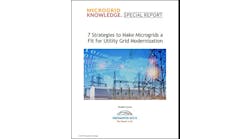Podcast: Play in new window | Download
The Rocky Mountain Institute is studying the value of microgrids after earthquakes in San Francisco, focusing on creating a network of microgrids that would protect critical resources and serve as emergency centers.
In this podcast interview (click on the player above), Koben Calhoun, a manager at RMI, and Leia Guccione, also a manager at RMI, discuss their efforts to create a plan for creating and funding such a network, most likely made up of 10 microgrids.
The USGS has reported that California has a 99 percent chance of an earthquake registering 6.7 or above in the next 30 years. Last year, a 6.0 earthquake left more than 40,000 people in the San Francisco Bay area without power. They city wants to prepare for the next big quake with microgrids, RMI says. Recently, the DOE’s solar market pathways program provided funding to San Francisco to integrate solar and energy storage into San Francisco’s emergency response plans.
RMI is helping out with this effort through its eLab Accelerator program, which f0cuses on innovations in energy.








